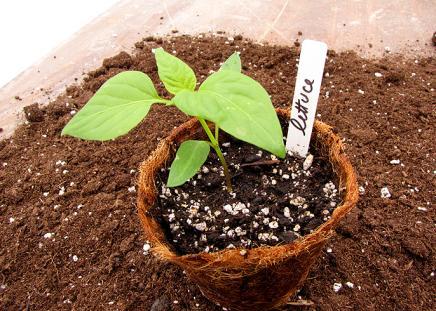 Garden planning
Garden planning
Find an area, which will receive at least five to six hours of direct sunlight daily. Decide which vegetables and the amount of each you want to include in your garden. Take into consideration: the amount of space you have available (some vegetables need more growing room than others); your own requirements for canning, freezing or table use; local frost dates and climate conditions. For a longer harvest period, plant vegetables at staggered time intervals. Allocate part of your garden for small, rapidly-maturing vegetables (such as radishes, lettuce, spinach). Keep tall vine or pole varieties from overshadowing smaller plants.
The following plants should be started from seed: beans, beets, carrots, corn, peas and radishes. When growing plants from seed, follow the instructions on the seed pack.
Soil preparation
Spade soil deeply. Loosen up heavy clay by adding peat moss and manure. Add 1 kg of garden fertilizer per 10 square metres. Turn the soil over again and rake smoothly.
Pre-planting care
| |||||||||||||||||||||||||||||||||||||||
thoroughly and keep them in the shade. Evenings and cloudy days are the best times to plant.
Planning your garden
First, make a list of all the vegetables your family enjoys (there's no use growing a vegetable if it won't get eaten). Then, put a number beside each variety indicating the number of plants required to feed you and your family. The table on the opposite page will help you as it indicates the number of plants required to feed a family of four.
How to plant
Moisten soil before planting, allowing it to dry slightly until it's workable. Generally, plant seeds about three times as deep as their diameter. Cover small seeds with finely sifted compost, soil or vermiculite. Plants not in individual containers should be gently separated to retain as much soil around the roots as possible.
Watering
Vegetables are thirsty! Water them thoroughly with a mild fertilizer to give them a good start. Thereafter, water whenever the soil begins to dry. Water early in the day by soaking the soil. Do not just sprinkle the foliage with water.
After-planting care
Cultivate out weeds as soon as they appear. For easier weed pulling, moisten soil an hour before cultivating. When removing weeds, do not disturb the roots of the plants. Your vegetables may have problems with insects or disease. If they do, bring a sample of the problem to your closest garden centre and let one of our experienced nurserymen identify the problem.